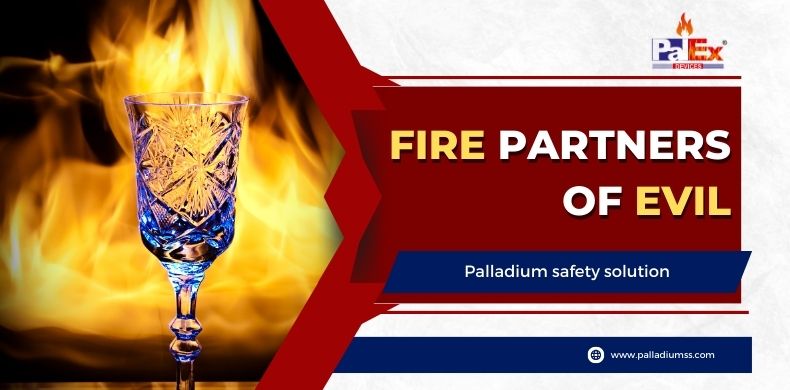The fire has many fellow conspirators that aid it in its destructive motives. A few examples are rubbing alcohol, aerosol cans, nail paint, nail paint remover, linseed oil, gasoline, turpentine, etc. These are highly combustible substances and thus pose a great threat if there’s a fire near them. Once these catch fire, they burn with such intensity that other items such as plastic, rubber, and home furnishing all come in its deadly grip.
Some other highly flammable materials such as fireworks, fuses, ammunition, igniters, blasting caps, pocket lighters, torches, etc., all act as reinforcement and contribute heat and gas to a raging fire thus, enhancing its extent of destructiveness. Certain liquids such as petroleum, benzene, acetone, etc. are also very burnable and thus dangerous.
EVIL PARTNERS IN FIRE
1. Combustible Dust
The materials that aren’t inflammable in normal states can turn highly volatile in dust form. The major cause of fires in wood manufacturing, food manufacturing, pharmaceuticals, and any other industry is this combustible dust that is often not considered as a threat. For a fire to come into being two things are needed, first a burnable material and second an ignition source. Once these two combine, an explosion can occur which will lift the dust from the ground making it airborne. This airborne dust particle can then cause a second explosion of a bigger magnitude. This can cause huge damage to life and property as these explosions have the potential to burn down entire buildings.
2. Hot Work
Activities such as welding, brazing, burning, torch cutting, heating, soldering, etc., all come under this category. This is due to the high mobility of sparks and molten materials that reach beyond a temperature of 1000°F and can easily travel in all directions up to a distance of 35 feet. These are also a leading cause for dust fires and these sparks can easily serve as the source of ignition for combustible dust nearby. There is a need to install Palex smoke detectors and Agni Heat detectors at such risky places.
3. Flammable Liquids and Gases
This category includes substances such as fuels, cleaners, thinners, solvents, wax, adhesives, etc. The issue here is that people aren’t usually aware of the high risk of fire associated with these materials due to their high combustibility. A fire that involves these liquids or gases can be very catastrophic.
4. Equipment and Machinery
Machinery in industries is always at a high risk of fire due to the immense friction between parts, which are in constant motion. For instance, when furnaces are mishandled and not properly installed, they become a major cause of the industrial fire. As these machines are in constant heavy motion, a lot of friction develops between their parts, thus becoming a potential of fire hazard. However, these risks can be considerably decreased by proper maintenance, such as lubrication of machines and equipment. make it sure to install Palladium AGNI 2 Zone Fire Alarm System for the safety of your employees.
Also read :Common Electrical Panel Problems and How to Solve Them
5. Electrical Fires
One of the major and most lethal causes of fire is an electrical fire. This can happen due to a number of faults such as exposed wires, extension cords, overloaded outlets, static discharge, etc. These can easily become an ignition source for any combustible material nearby such as combustible dust, inflammable liquids or gases, thus leading to fire of a very big extent.



